From the foot soldier’s perspective: The Kenyan elections 2013 from an election observer’s viewpoint
Chapter 13: Exhibits
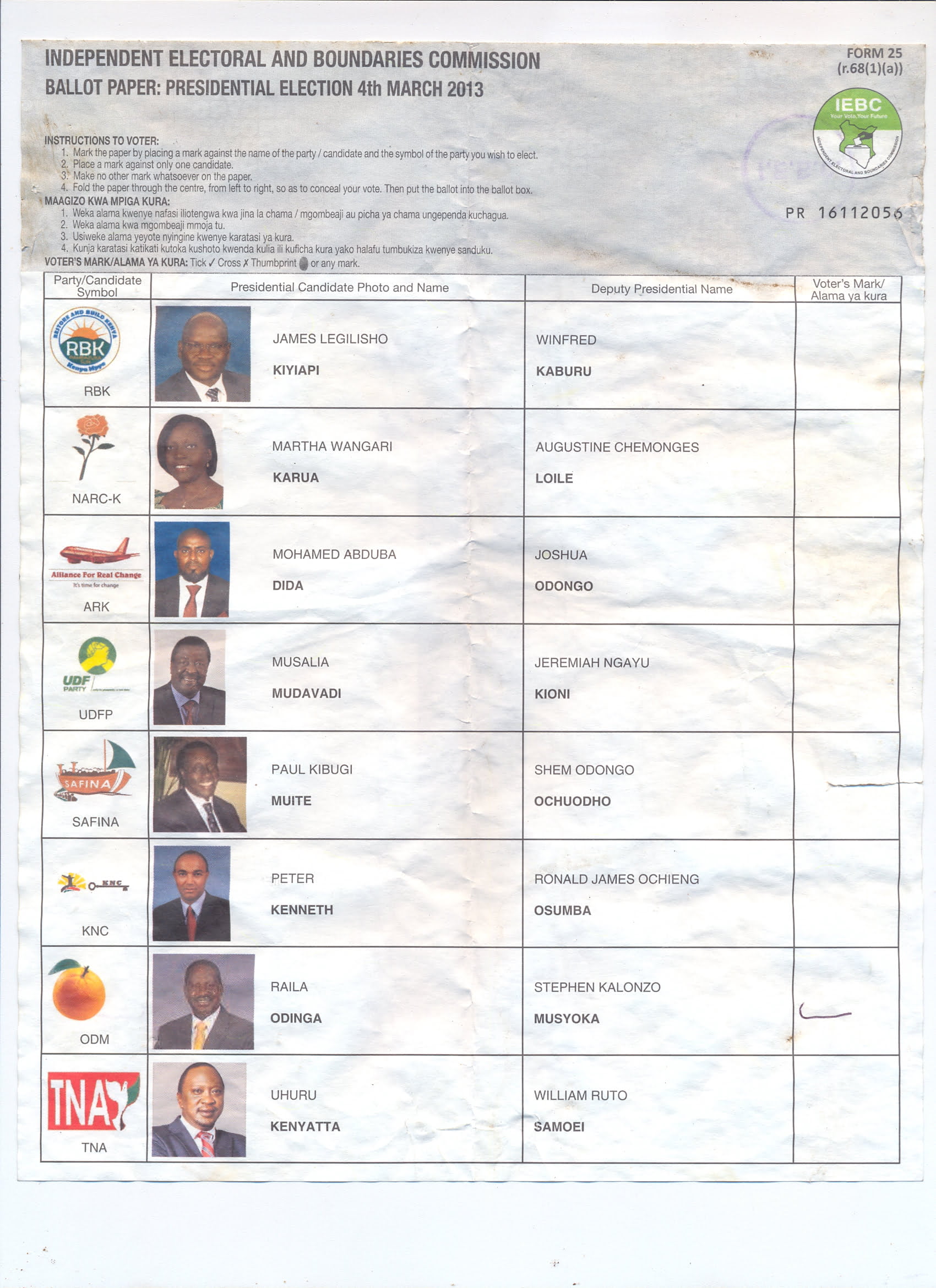 ‘I order you to release my employee and hand over to her all the evidence you found, otherwise I send the Security after you to get you’.
‘I order you to release my employee and hand over to her all the evidence you found, otherwise I send the Security after you to get you’.
A short while after we had arrived at the fast food place, I received a phone call. A female voice accused me of having kidnapped the journalist who had accompanied me initially and ordered me to release her and hand over all evidence to her, so she could carry it away with her.
As I had not kidnapped anybody, I realised that the hunt for me and my material had started. I told the caller off and told the ‘journalist’ to leave and come back with the Police to arrest me in public and repeat the kidnapping claim in public as well. As I was accompanied with an observer team with their cameras, we were all set for the things to come. We waited for an hour, but no Police or Security came. Knowing that things were hot now, we decided to split up.
The team of observers would go back to Bomas to find out what the situation was and in particular how much effort was put into getting me. I myself would have to go into hiding somewhere, at least for the night. As the other observers were too afraid to take the material with them, I kept the material myself and decided to guard it with my very own life. I had to guard my very own life anyway now.
I was wondering who was behind those threats. Where those fellow ‘journalists’ who were threatening me, put onto me by the people behind the election irregularities, as their ‘bosses’ got aware that I was researching the irregularities a bit deeper than other journalists? And if so, who was behind all of this mess the elections had turned into?
Or was it just an unethical attempt from a competing news agency to get my material and run away with the scoop? If so, how far would they venture into their unethical behaviour?
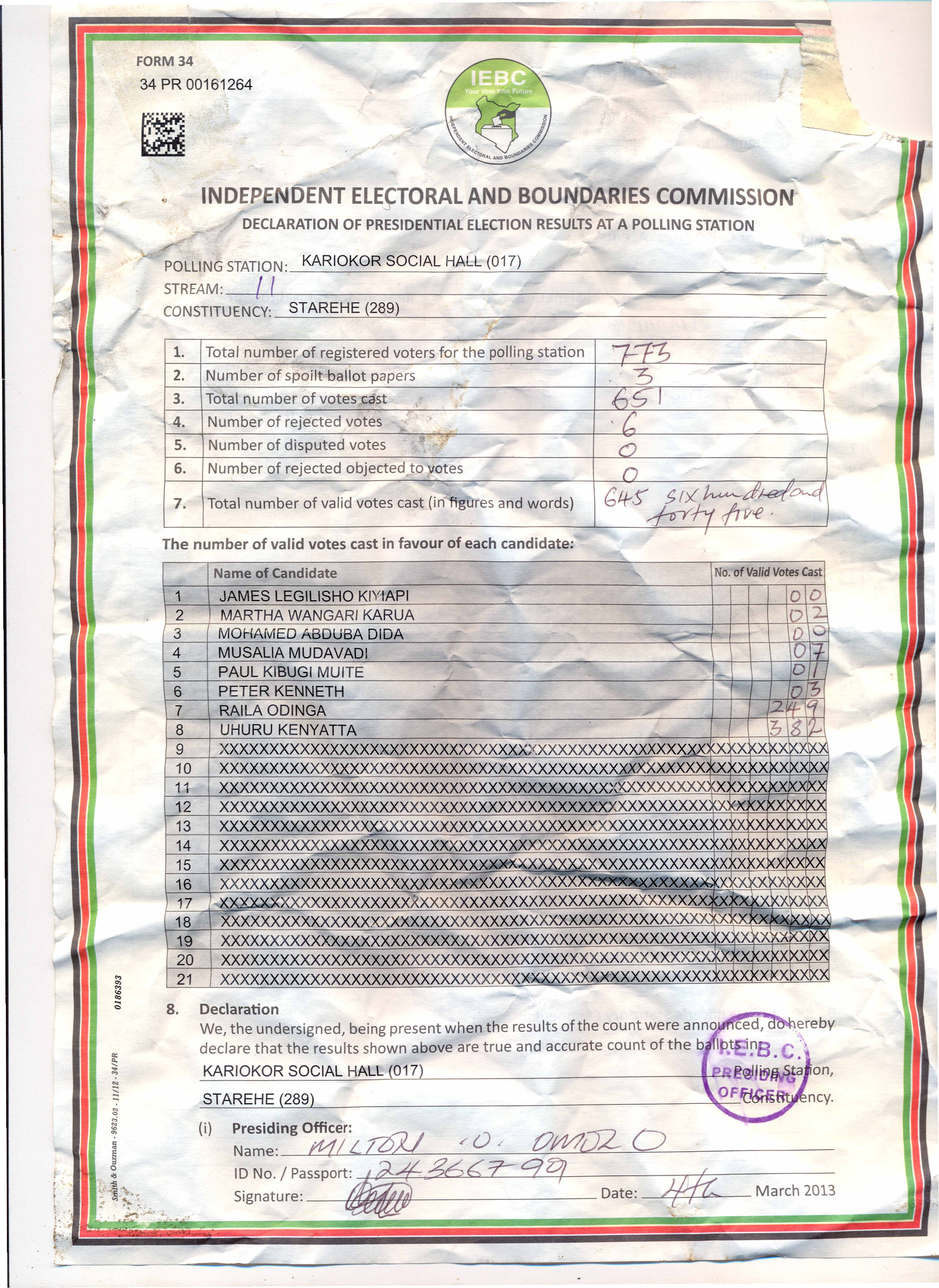 After the other observers had left, I stayed behind at the fast food place. I was a footsoldier on my own now, all alone behind enemy lines. I got into my car and sped off into the night.
After the other observers had left, I stayed behind at the fast food place. I was a footsoldier on my own now, all alone behind enemy lines. I got into my car and sped off into the night.
I took the batteries out of my phones and drove zigzag lines through the outskirts of Nairobi for many hours. Now and then, I put a battery in one of my phones, made a phone call to find out any news, took out my batteries right after and sped off in zigzag lines again.
The replies on my calls were negative. Nobody knew nothing.
If ‘they’ were hunting for me, I would give them a run for their money. And a run it was. Literally.
When I was sure, as sure as I could be, that nobody had followed me (or to be more precise: that I got rid of everybody who could have potentially followed me), I decided to stay at a friend’s place for the night. Grateful for having good friends, I sank into a sleep full of strange dreams.
The next morning I had just put the batteries back in my phone to make one of my regular phone calls, when my phone rang. ‘Do you still have the material?’ did the voice ask. I did not know the caller, but the caller must know something about me, obviously. I tried to find out who was at the other side, but the connection was interrupted. I decided it was time to put my batteries out again and change location, as fast as possible.
Several times during the day the ritual repeated itself. I put in my batteries, very soon after my phone rang, and somebody started to ask me questions. It seemed that somebody well organised was trailing me.
I decided to seek assistance from the Kenyan Human Rights Commission (KHRC). Not far away from their offices, I switched on my phone again. Soon after my phone rang, and this time I told the caller where I was going and invited them to come to the KHCR offices as well and witness the handover of the material.
Nobody came to the KHCR offices, but the phone calls stopped as soon as I entered KHCR.
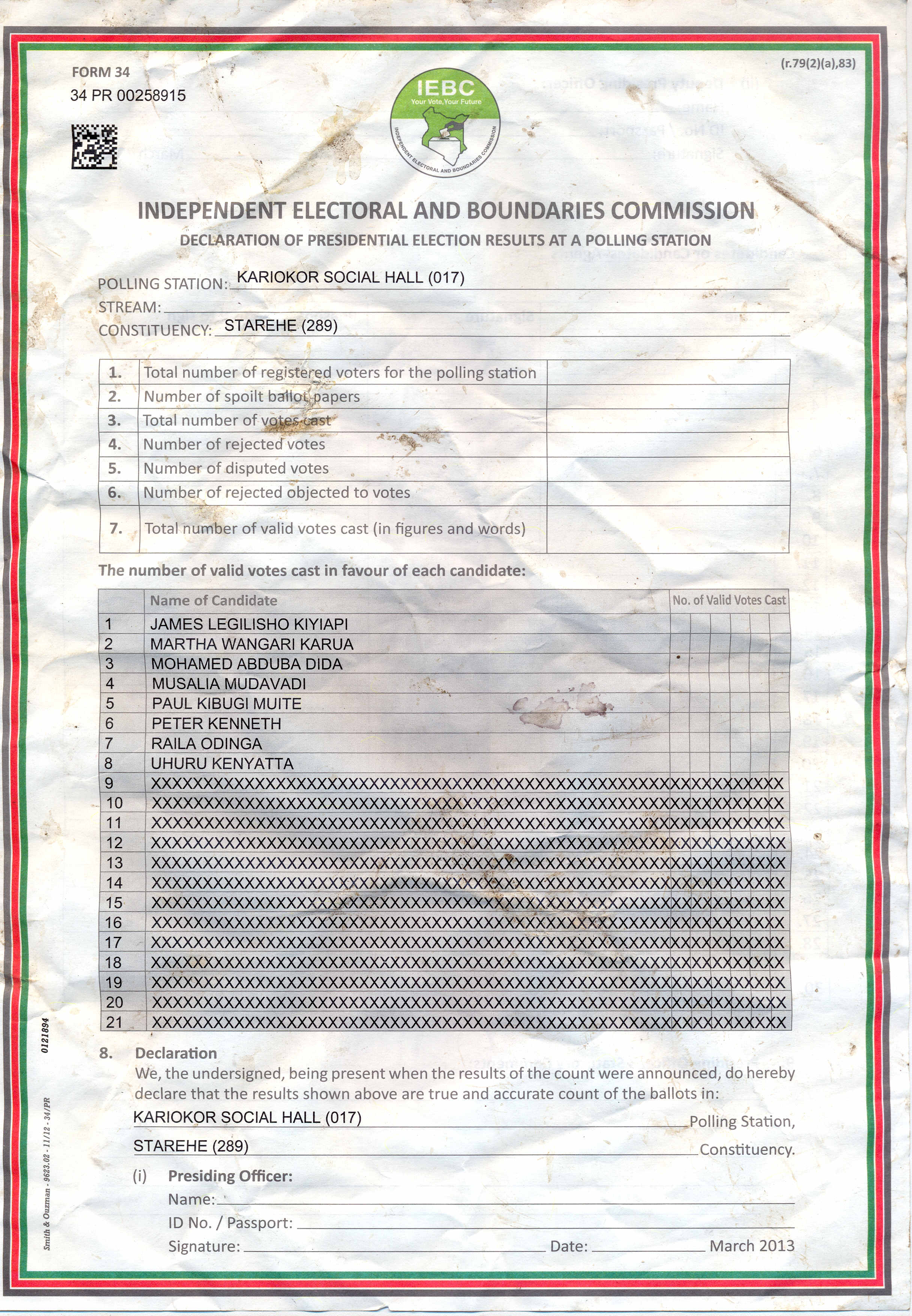 The KHCR offices were quiet. Most of the staff was out in the field observing the situation. When I presented my material and my story to the officer on duty, he decided to call in as much as possible high ranking officials as he could reach. After an hour, the meeting about my material started. The managers decided that the material needed to be verified by their own specialists, before publishing it and taking action on it. The situation in Kenya was turning more explosive every day, to publish something like this could be a spark. Leave alone if the material would have turned out to be fake. I agreed to the verification of the material and waited for 3 hours before it was completed.
The KHCR offices were quiet. Most of the staff was out in the field observing the situation. When I presented my material and my story to the officer on duty, he decided to call in as much as possible high ranking officials as he could reach. After an hour, the meeting about my material started. The managers decided that the material needed to be verified by their own specialists, before publishing it and taking action on it. The situation in Kenya was turning more explosive every day, to publish something like this could be a spark. Leave alone if the material would have turned out to be fake. I agreed to the verification of the material and waited for 3 hours before it was completed.
I did not expect the particular result of the verification process. I was told by the KHCR managers that my material was used during a mock election exercise two weeks before at Kariokor Social Hall and was obviously not properly disposed after the exercise. It was therefore of no real value. They lauded me for having taken the effort to come to KHCR to verify it before I had propelled it into the world. I was told that they wished that every journalist would be that responsible.
So, pity for me, no scoop and all this drama for nothing. As the material had no value, they offered that I could dispose it at their office, but, as it had no value anyway, I could also take it back with me.
I decided to take it back with me.
Baffled, I left the KHCR offices and went home.
The next morning, while around me Kenya was shuffling closer to the abyss, I decided to verify the verification of the KHCR. After a couple of hours of research, I had learned two things: 1. There had never been a mock election exercise at Kariokor Social Hall, 2. The mock election papers looked completely different than the ones I had in my possession.
I took the batteries out of my phones, got in my car and sped off.
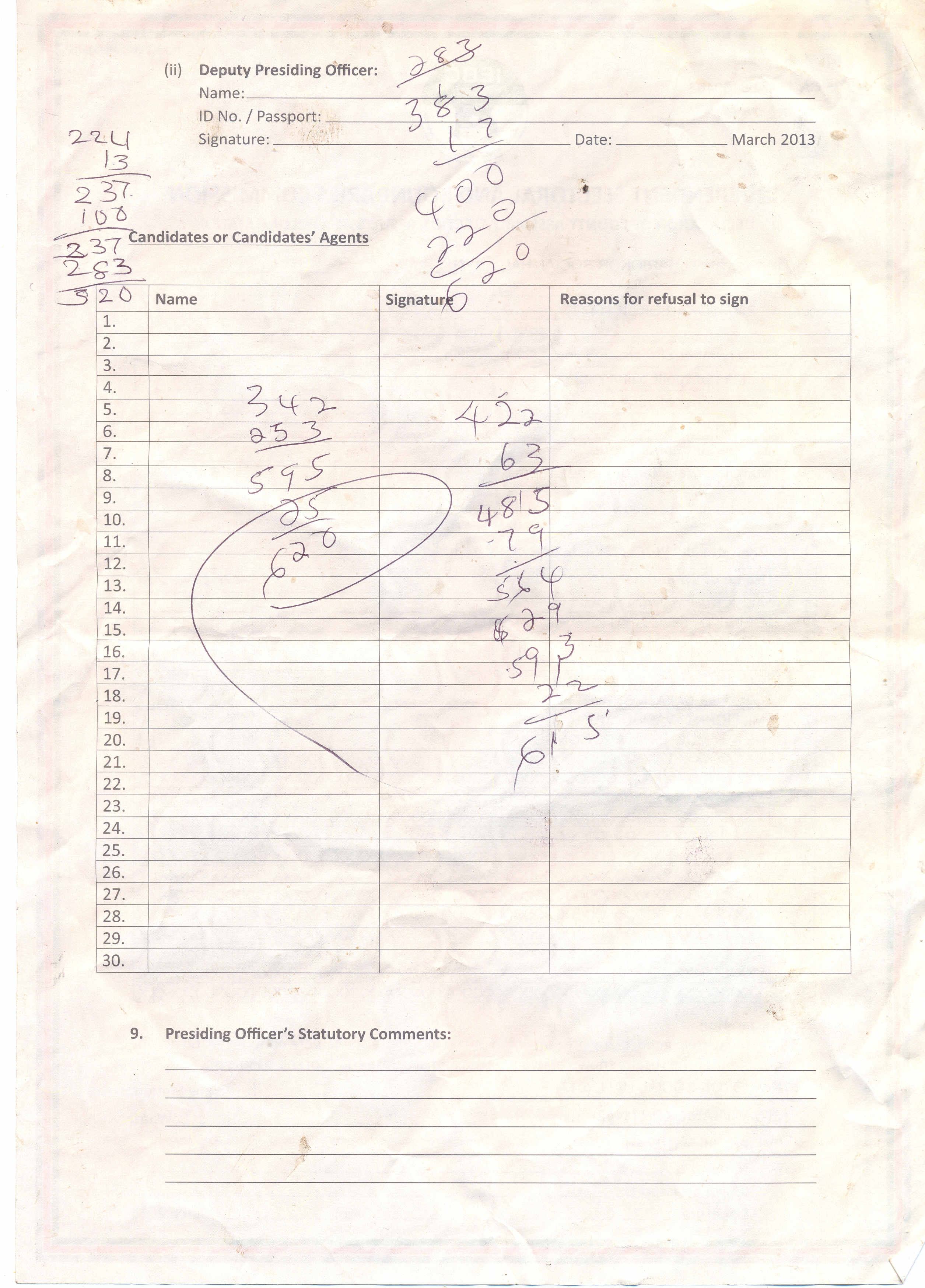 If even KHCR had set me up, who to turn to now? I realized, that soon somebody might come to check if I really believed that I had mock papers in my possession. I contemplated if all of this was really happening, or if my imagination had gone haywire. But by all possible means, it was real. I was deep inside the Kenyan reality.
If even KHCR had set me up, who to turn to now? I realized, that soon somebody might come to check if I really believed that I had mock papers in my possession. I contemplated if all of this was really happening, or if my imagination had gone haywire. But by all possible means, it was real. I was deep inside the Kenyan reality.
Not long after my reality check, I met the foreign observer/journalist who was part of the team I had called in when I had found the material. She told me that she was so afraid that she would destroy all the material she had recorded from that day. Furthermore, she would not testify anything in any place and wanted to be left out of the whole case. She restricted me to mention her name in any way related to the whole matter.
‘Meeting’ would not actually describe the situation properly. She shouted at me hysterically, rather hammering her position into my eardrums. When I asked her what had happened in between and why she came to this decision, she declined to give me an answer and left. I was baffled again.
The Kenya National Commission on Human Rights (KNCHR) had a hotline to report election irregularities to. I called the hotline to report my case and given the precarious situation I was in, asked for a meeting with them as soon as possible, if possible, right away.
After I did my story over the phone, I was told by the person on the other side that she would forward my story to her superiors and I would be called back within the next days. I made my point clear that I did not think that I had time to wait for that to happen, given my situation. After a lot back and forth, I was told that ‘I could possibly meet somebody tomorrow’. As this was obviously the best they could do for me, I agreed to the arrangement.
The next day, I was at the agreed time on the agreed spot, but no KNCHR officer came. Though, a SMS came, excusing the particular officer for being stuck in traffic jam and not being able to come.
I called KNCHR again. They gave me an another appointment in two days time.
[Break: Uhuru was declared winner of the elections in between, see the next chapter.
For consistency reasons, I continue here with the follow up of the story above. If you want to follow the chronological path, read chapter 14 and come back here.]
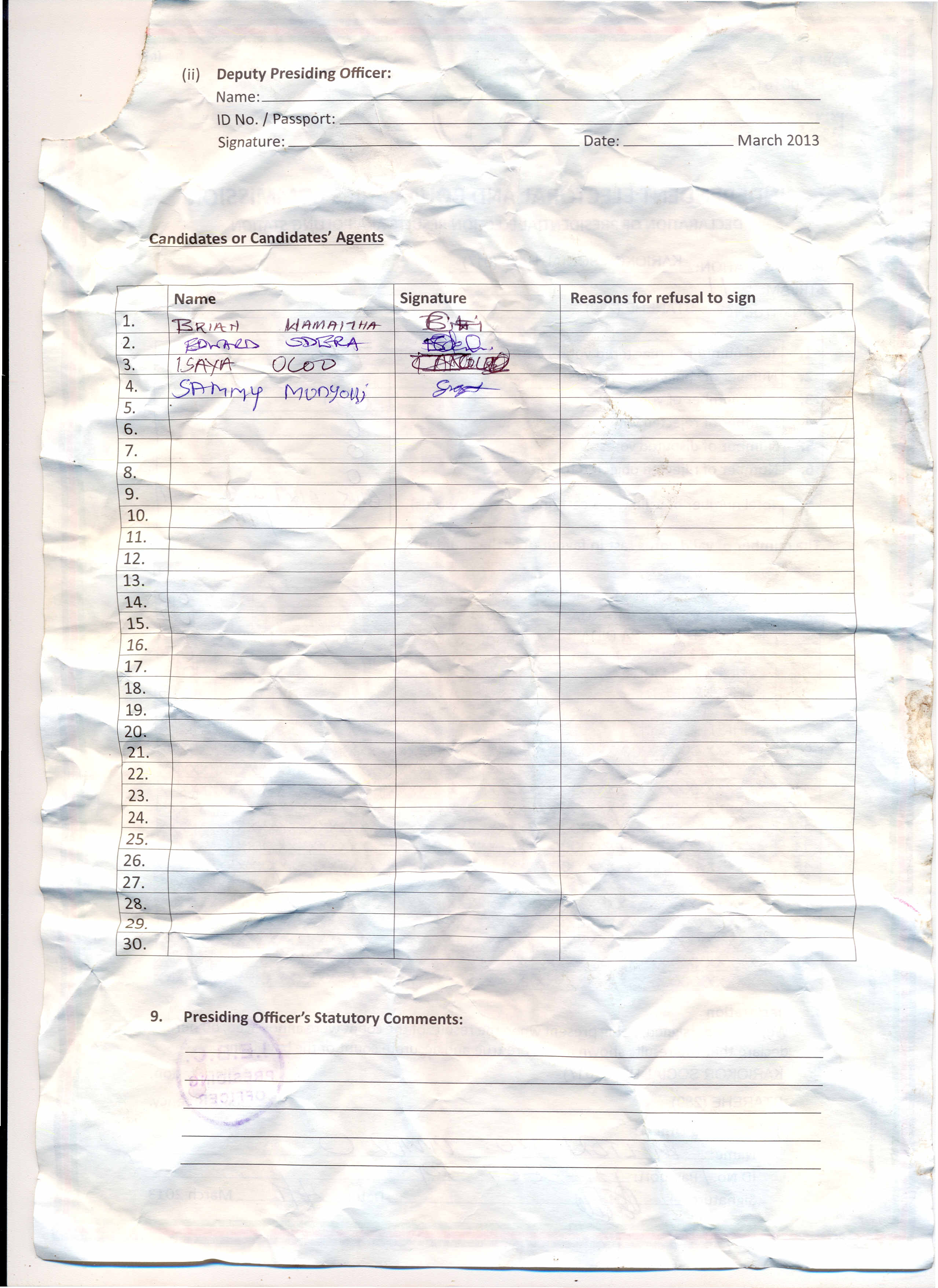 2 days later, the meeting went ahead at the KNCHR offices. The officers there seemed to me very nervous after I had told them my story. They seemed to become even more nervous when I insisted to have an official of KNCHR accompany me to hand over my material to the Kenyan Police. Uhuru was declared winner of the elections in between, in elections with massive irregularities. Raila and several NGO’s were seeking legal redress at the Kenyan Supreme Court. And I wanted my evidence to go to Supreme Court as well.
2 days later, the meeting went ahead at the KNCHR offices. The officers there seemed to me very nervous after I had told them my story. They seemed to become even more nervous when I insisted to have an official of KNCHR accompany me to hand over my material to the Kenyan Police. Uhuru was declared winner of the elections in between, in elections with massive irregularities. Raila and several NGO’s were seeking legal redress at the Kenyan Supreme Court. And I wanted my evidence to go to Supreme Court as well.
Of course, my evidence could not just being handed over to any Commanding Officer at any Police Station. I wanted to hand it over to the office of the Inspector General (IG) of the Kenya Police, if possible to the Inspector General Kimaiyo himself. And I would not go alone. I was inviting fellow journalists for the occasion and I was requesting a representative of the KNCHR to be present as well, if possible a lawyer.
The KNCHR officials gave me a letter to take to Kimaiyo. They said, that the Kenyan Police would not like it if Human Rights officials were present at the handover, neither did they advise me to invite the media. All of this would only be counter-productive for what I wanted to reach. If I would make a ‘public event’ out of it, the Police and the Judiciary might just reject my evidence and declare it null and void for procedural reasons. The best way to hand over the material, would be, just me alone, at the IG’s offices.
So I was told.
I left the KNCHR offices with their letter. Was I baffled?
I started to invite fellow journalists for the handover at the Inspector General’s Office. Several of them asked me, if I was not scared. Others asked me, if I really thought that the IG’s office was the right place to hand over my material to. In a country of the blind, a one-eyed man is the King. Having no better option, I settled for the IG.
The night before my planned handover, I received a phone call. A high-ranking Kenyan Government official was on the other side. He instilled on me the idea, that the IG’s office would not be the right place to go to. As everything in Kenya had become biased due to the disputed elections, it would not be a guarantee if my material would reach Supreme Court in time through the IG’s office. Even if the IG himself would accept it, within his office would be enough opportunities by ‘maligned juniors’ to sabotage the submission of my material to Supreme Court. My material could ‘disappear’ and so could I. He offered to arrange a meeting with a Member of Parliament (MP) close to Raila, to make sure that my material would be included in Raila’s case.
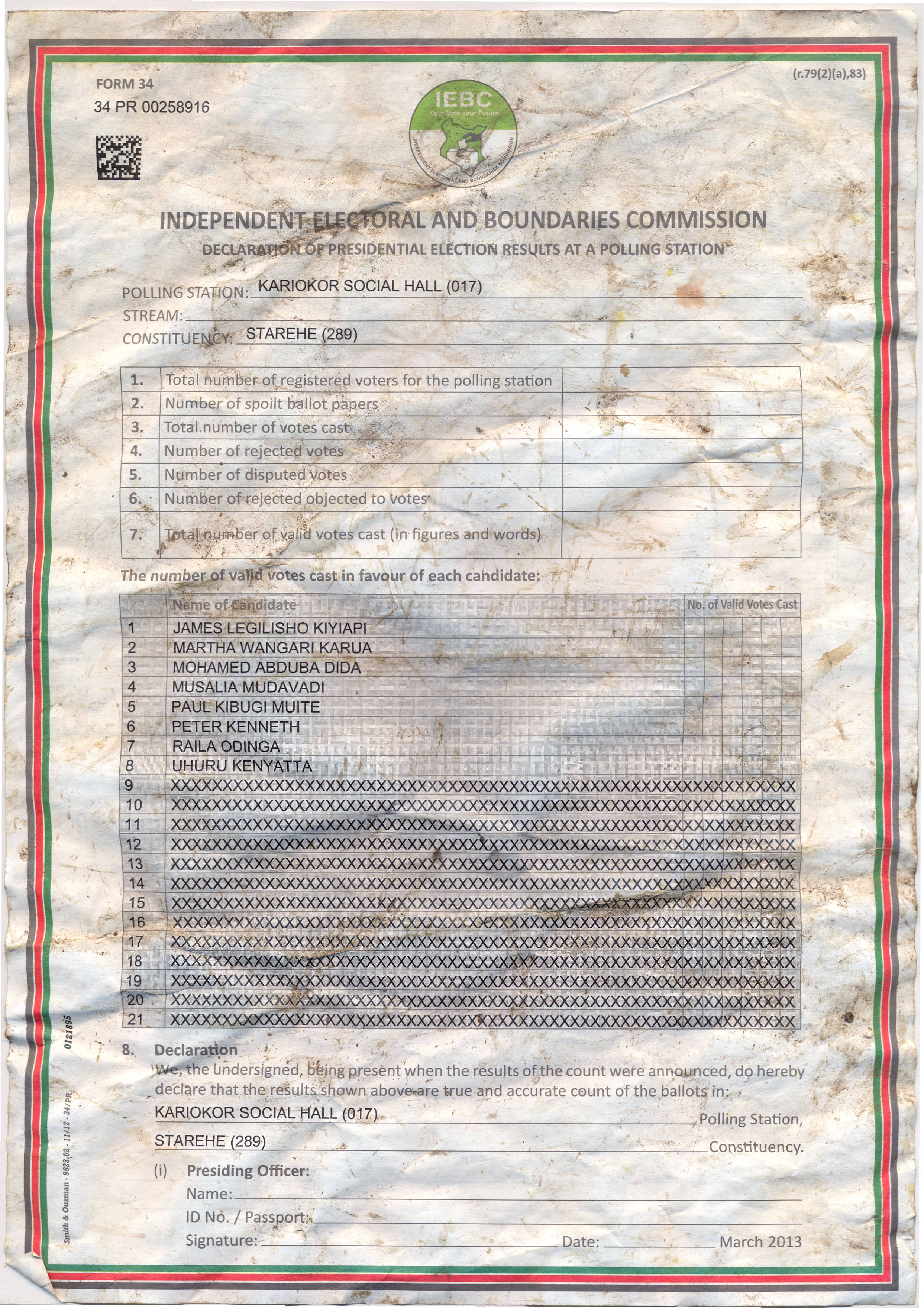 Listening to him, he had a point. Though, I did not want necessarily hook myself to one of the two main opponents in the election drama. Of course, I realized that my evidence would be beneficial to Raila at long last. But would I necessarily have to align myself to one of the contestants? It would not help in maintaining the neutral outlook of my research. So far, I was a neutral election observer. If accepting the offer, I would be linked with Raila, I would be in his camp. If I would not accept, the chance was that my evidence would not be used at all. It was a dilemma of sorts.
Listening to him, he had a point. Though, I did not want necessarily hook myself to one of the two main opponents in the election drama. Of course, I realized that my evidence would be beneficial to Raila at long last. But would I necessarily have to align myself to one of the contestants? It would not help in maintaining the neutral outlook of my research. So far, I was a neutral election observer. If accepting the offer, I would be linked with Raila, I would be in his camp. If I would not accept, the chance was that my evidence would not be used at all. It was a dilemma of sorts.
I decided that it was most important to have my material being submitted to court.
I accepted the offer.
The next day, instead of meeting Kimaiyo, I met a MP close to Raila. He forwarded me swiftly to Raila’s lawyers Rachier & Amollo. There, I found that almost by the minute, material from all over Kenya was coming in about electoral irregularities. A lot of the material needed further verification, other material had no legal value at all and other material spoke for itself and didn’t need much verification. The incoming material was massive, ranging from details on irregularities on stream level in various polling stations, to the hosting and manipulation of the IEBC servers at a firm closely related to the Kenyatta family (Kencall), to the acquisition of substandard voter identification kits, to the complete failure of the electronic transmission systems and much, much more.
I learned that I was one of the few people in Kenya who had found a real ballot paper, a ballot paper for Raila.
I did my story and an affidavit was drawn. I signed fourteen affidavits: one affidavit for myself, one for the file, one for each Supreme Court judge, one for the IEBC, one for Ahmed Issack Hassan, one for William Samoei Ruto, one for Raila Amollo Odinga and one for Uhuru Muigai Kenyatta.
Now my cover was blown. Now they all got to know.
The hide and seek game was over.
Find some of my exhibits as submitted to Supreme Court in this gallery.
Continue to read here:
Click here to see the gallery FULLSCREEN